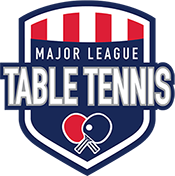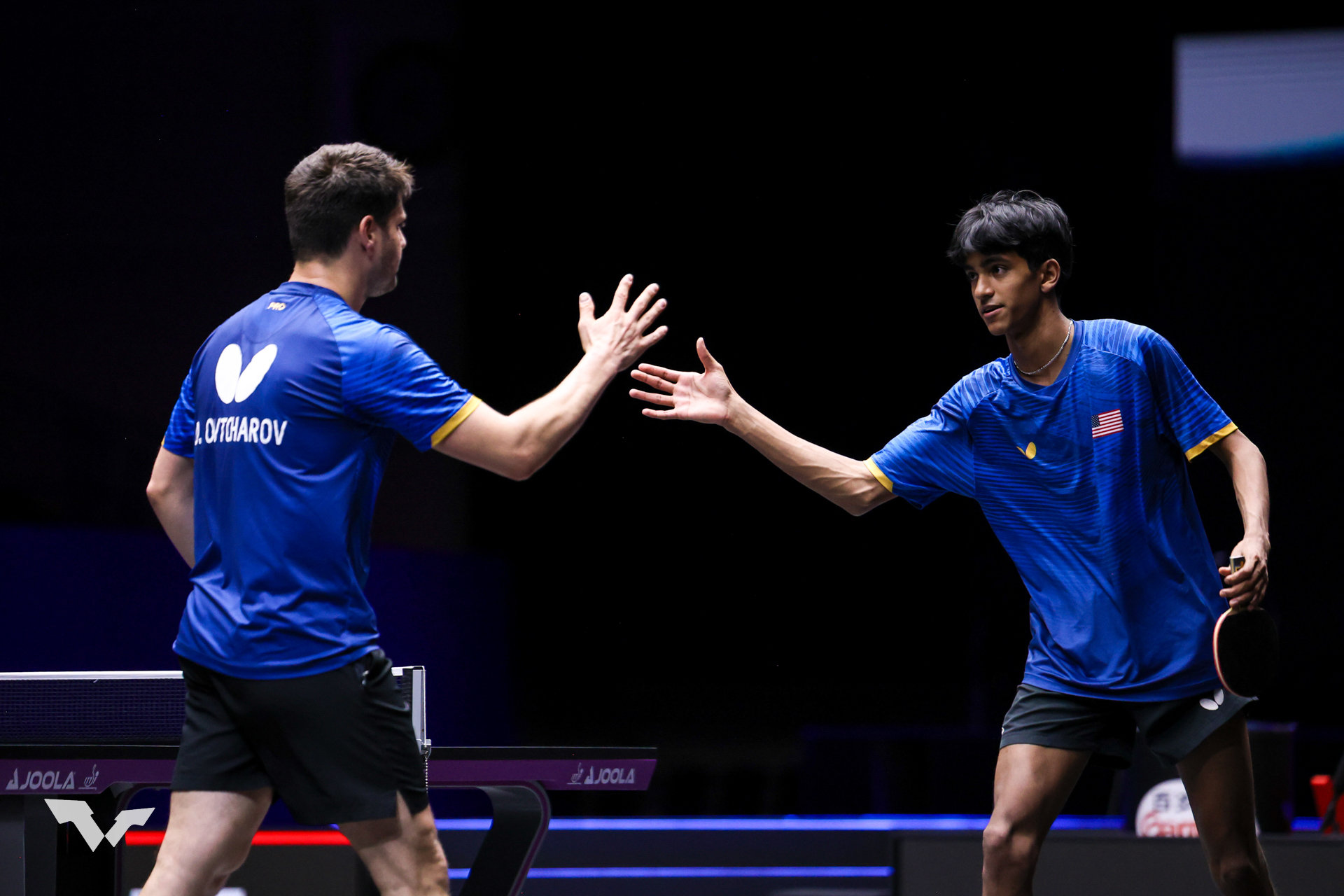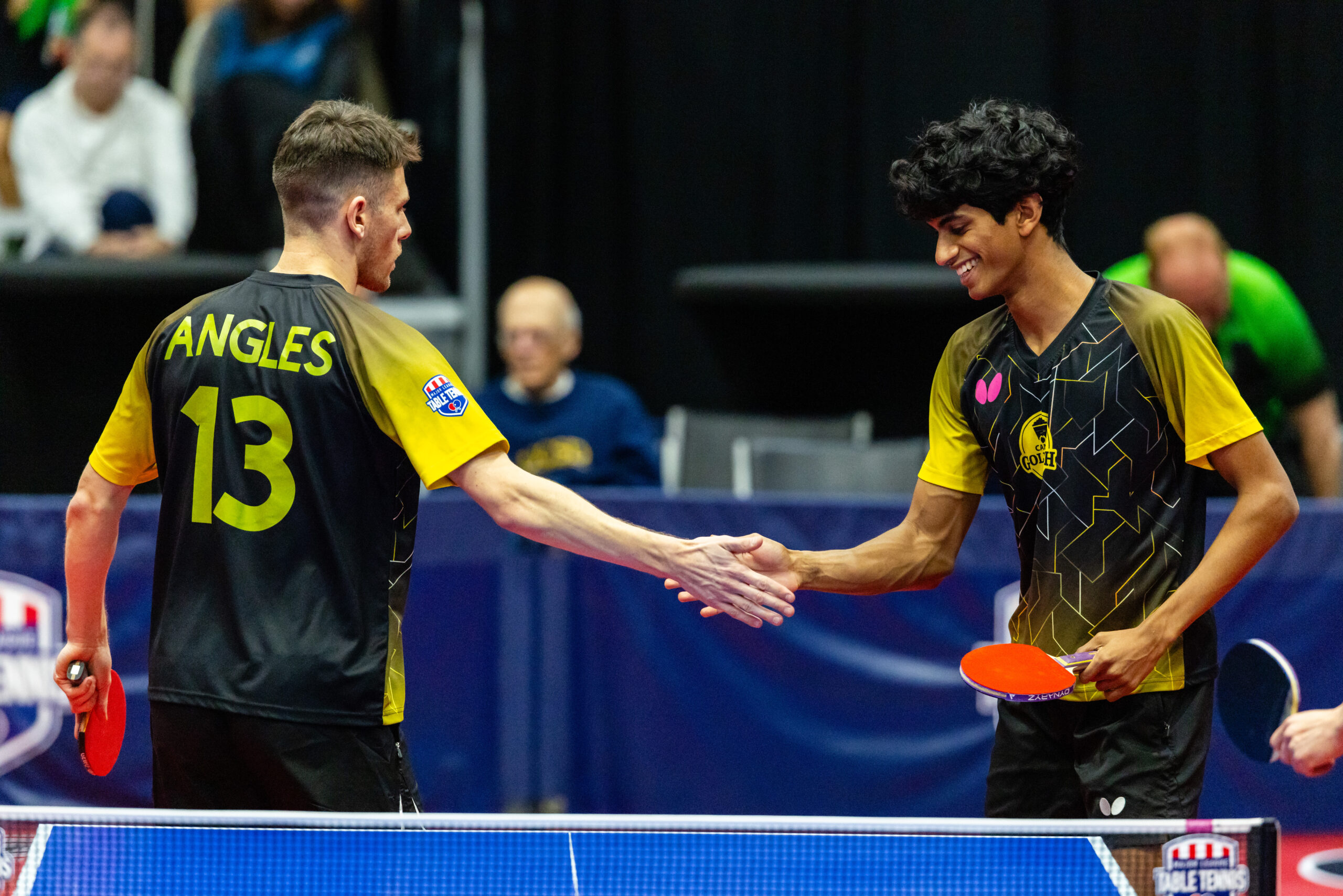By: Sean O’Neill, U.S. Table Tennis Hall of Famer
A Simple Rule Shift—Massive Strategic Implications
In July 2025, Major League Table Tennis introduced one of its boldest rule changes to date: Open‑Serve Doubles. Unlike traditional ITTF doubles rules, where the serve must be delivered diagonally, MLTT’s Open‑Serve format allows the server to send the ball anywhere on the opponent’s side—just like in singles.
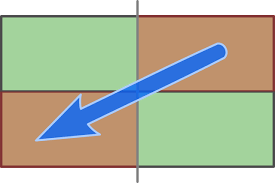
Traditional Doubles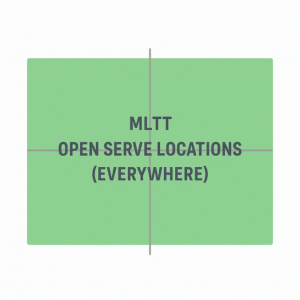
This unlocks a new level of serve variety, but it also introduces a new challenge: The unpredictability of serve placement now requires elite communication and instant coordination between partners.
What Changed?
Serving Order:
The serving rotation remains unchanged. Teams will continue to alternate servers in a fixed order, just as they do in traditional play.
Server Position:
In traditional doubles, the server must stand on the right-hand side of the table. MLTT’s Open-Serve format removes that restriction—players can now serve from anywhere on their side of the table.
Serve Direction:
Previously, doubles players were required to serve diagonally. With Open-Serve Doubles, servers may now direct the ball anywhere on the opponent’s side, opening up new angles and tactics.
Receive Rotation:
The alternating receive pattern—switching every two points—remains the same under the new rule.
Why This Change Is So Impactful
1. Total Serve Freedom
Servers will now choose:
- Whether to serve from left, center or right side
- Whether to go wide, deep, short, or into the body
- Whether to use topspin, backspin, side-spin, a combo or dead ball
“This is the closest we’ve ever come to singles-style serving in doubles—and it changes everything.”
2. Communication is No Longer Optional
Now that serves can go anywhere:
- The partner must know in advance where the ball is going
- The movement plan must adjust instantly
- Missed signals = missed attacks… or worse, collision
Teams are now using:
- Hand signals
- Eye contact before every point
- “Plan A” and “Plan B” third-ball setups
Example Scenarios
Old Rule:
- Server A serves diagonally to Receiver X
- Partner B knows the serve angle and waits for their role
New Rule:
- Server A can serve short to forehand, fast long to backhand, or jam the elbow
- Partner B must adjust footwork and positioning in real time
- Misreads = exposed middle, missed opportunity, or confusion
Tactical Adjustments We Will See in MLTT
- Pre-serve signals for serve location and third-ball roles
- Footwork drills that include reacting to any serve angle and getting out of the way
- Doubles pairs serving long instead of basic short and low serves.
- Serve + loop combos that mimic singles flow
Final Thoughts
MLTT’s Open‑Serve Doubles format didn’t just bend the rules—it unlocked the full tactical potential of the serve in doubles play. By eliminating the diagonal requirement, it:
- Rewards creativity
- Demands communication
- Tests anticipation
- It’s not just about serving smarter.
- It’s about playing together, sharper.
Players’ Feedback
Kayama Yu (Atlanta Blazers) – “I think it’s a great advantage for me because my backhand long ball will be more effective. On the contrary, when receiving the serve, I feel that the next person will have a very uncomfortable time playing because it’s a full-court game, and it’s hard to move around. But I think if we practice and coordinate well, it’s not a big problem. So I think my advantage is a bit bigger, and I find it quite interesting.”
Manu Lebesson (Chicago Wind) – “About doubles to be honest I’m really excited to see how it will work and start to play and fight to find options especially in receives. I think many players not only in MLTT will be curious to see this new format of doubles.”
It’s not just about serving smarter. It’s about playing together, sharper.
Join the Conversation
Tag @MLTT and use #OpenServeDoubles to show us how you adapt.
